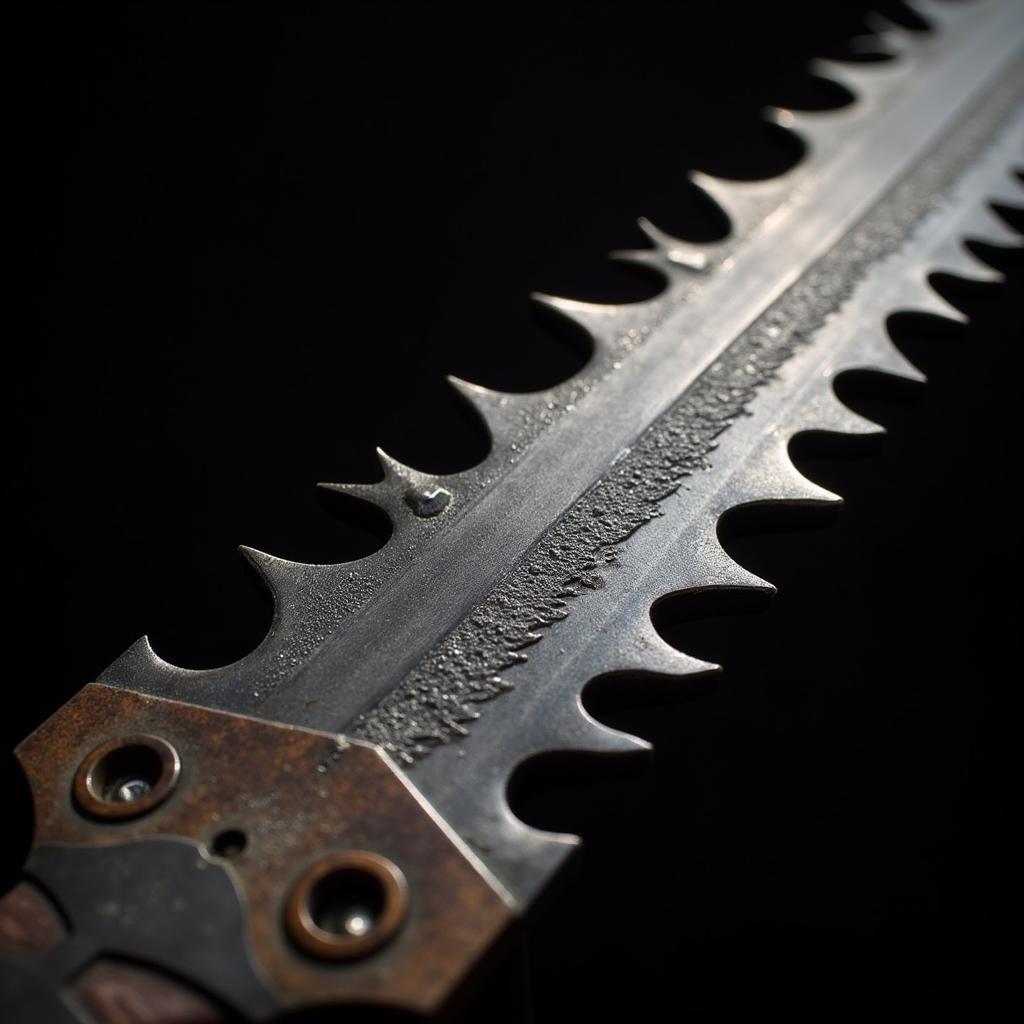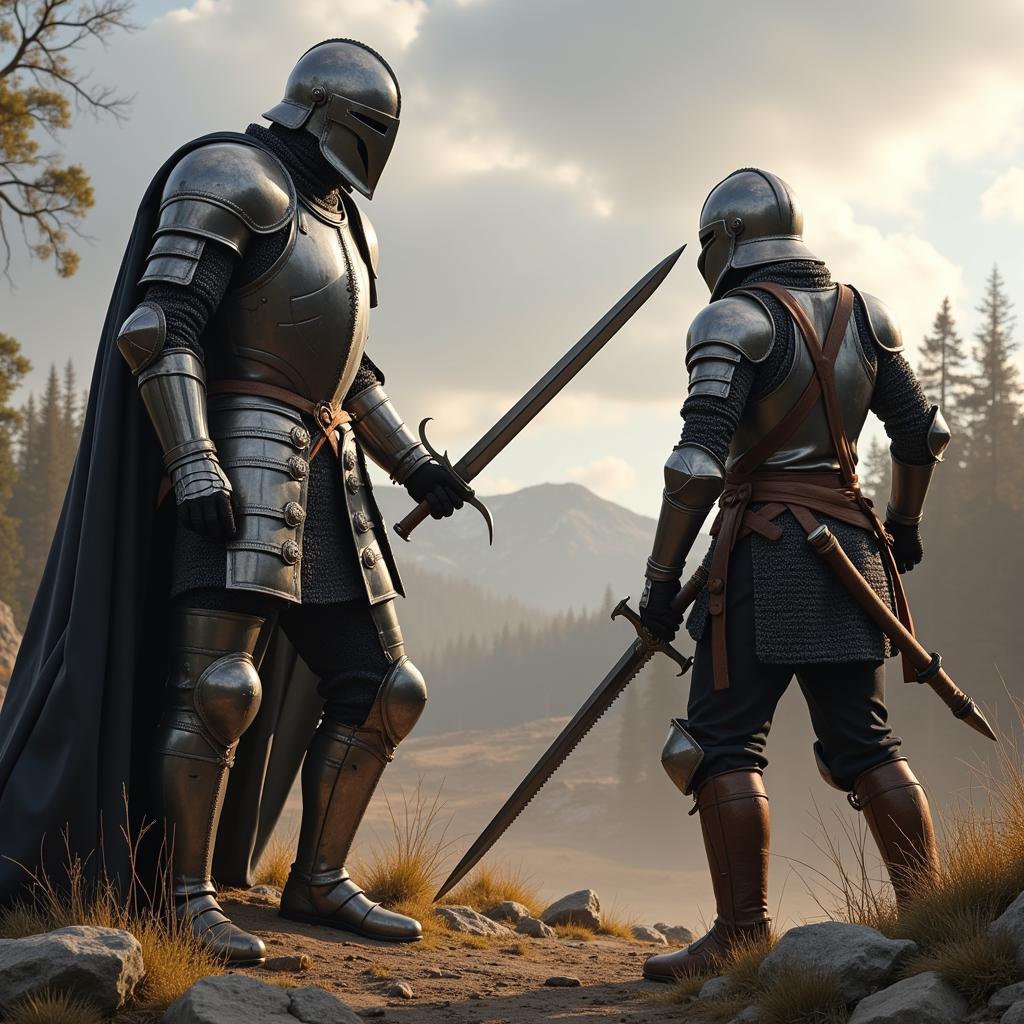Mastering the Sawtooth Saber: A Comprehensive Guide
October 26, 2024The Sawtooth Saber, with its distinctive serrated blade, is a weapon that has captivated historians and weapons enthusiasts alike for centuries. Its unique design hints at a brutal efficiency, but its exact purpose and effectiveness on the battlefield remain a subject of debate. This comprehensive guide delves into the history, characteristics, and potential uses of the sawtooth saber, separating fact from fiction and exploring its enduring allure.
Unveiling the Sawtooth Saber: Design and Characteristics
Unlike traditional sabers with smooth, curved blades optimized for slashing, the sawtooth saber features a row of sharp teeth along its edge, reminiscent of a saw. This distinctive feature immediately sets it apart and raises questions about its intended use. Was it designed to rip through flesh and bone with gruesome efficiency? Or was its purpose more nuanced, perhaps targeting lightly armored opponents or serving a specialized role in combat?
 Anatomy of a Sawtooth Saber
Anatomy of a Sawtooth Saber
Historical Origins and Evolution of Sawtooth Sabers
The origins of the sawtooth saber remain shrouded in mystery. While swords with serrated edges have appeared throughout history in various cultures, the specific type of saber with a pronounced sawtooth pattern emerged later. Some historians speculate that it might have originated in Eastern Europe or Asia, where serrated weapons were more common.
 Medieval Battlefield Scene with a Sawtooth Saber
Medieval Battlefield Scene with a Sawtooth Saber
However, concrete evidence linking specific sawtooth saber designs to particular regions or time periods is limited. This lack of clear historical documentation further fuels the debate surrounding its true purpose and effectiveness.
Fact vs. Fiction: Debunking Myths About the Sawtooth Saber
The sawtooth saber’s intimidating appearance has led to numerous myths and misconceptions about its use in battle. Some claim it was designed to inflict horrific wounds, capable of cleaving through armor with ease. Others argue its serrated edge would have been impractical, easily getting stuck in bone or failing to penetrate chainmail.
One common misconception is that the sawtooth design was intended to increase the weapon’s deadliness by creating wider, more devastating wounds. However, historical accounts and modern reconstructions suggest that the serrated edge might have had a different purpose altogether.
“The sawtooth design wasn’t necessarily about making wounds bigger,” explains Dr. Emily Carter, a historian specializing in medieval weaponry. “It’s more likely that the serrations served to enhance the saber’s cutting ability against certain materials.”
The Potential Uses of the Sawtooth Saber in Combat
While its true purpose remains a subject of debate, historians and weapons experts have proposed several plausible uses for the sawtooth saber in combat:
- Targeting Lightly Armored Opponents: The serrated edge could have been effective against lightly armored or unarmored opponents, potentially causing greater damage to flesh and muscle.
- Cutting Through Thick Clothing and Padding: The sawtooth design might have been useful for cutting through layers of thick clothing, padding, or even animal hides, which were common forms of protection in some periods.
- Specialized Roles and Psychological Warfare: Some historians speculate that sawtooth sabers might have been used by specialized troops or for specific tactical purposes. Their intimidating appearance could have also played a role in psychological warfare, striking fear into the hearts of enemies.
 Knight Facing a Foot Soldier with a Sawtooth Saber
Knight Facing a Foot Soldier with a Sawtooth Saber
The Enduring Allure of the Sawtooth Saber
Despite the lack of definitive historical evidence, the sawtooth saber continues to fascinate. Its unique design, shrouded in mystery, sparks the imagination and invites speculation. Was it a brutally effective weapon or a specialized tool with limited applications? The answer might lie hidden in the annals of history, waiting to be discovered.
FAQs about Sawtooth Sabers
1. Were sawtooth sabers common weapons?
No, sawtooth sabers were relatively uncommon compared to traditional sabers with smooth blades. Their specific design suggests they might have served specialized roles or been favored by particular groups.
2. Did sawtooth sabers get stuck in bone?
While the serrated edge could potentially get stuck in bone, this outcome would depend on various factors like the angle of impact, the force applied, and the specific bone structure.
3. Could sawtooth sabers cut through armor?
It’s highly unlikely that sawtooth sabers could effectively cut through metal armor like chainmail or plate armor. Their design suggests they were more effective against lightly armored or unarmored opponents.
4. When were sawtooth sabers used?
The exact time period when sawtooth sabers were used remains unclear due to limited historical documentation. Evidence suggests they might have been used in various periods, potentially emerging later than traditional sabers.
5. Are there any surviving examples of sawtooth sabers?
Yes, a few surviving examples of sawtooth sabers exist in museums and private collections worldwide. However, their rarity makes them valuable artifacts for researchers and collectors.
For all inquiries or assistance:
- Phone Number: 0915117113
- Email: [email protected]
- Address: Tổ 3 Kp Bình An, Phú Thương, Việt Nam, Bình Phước 830000, Việt Nam.
We have a 24/7 customer support team ready to assist you.